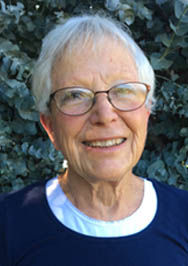So many of our flowering plants are taking either a long hike into dormancy or a short walk to the compost pile. We discover, by observation and experience, whether some need extraction while others only need to be ignored.
Then there are the winter surprises that we in California and the northwest share—the shrubs and flowers that come to life when daylight hours diminish, as well as temperatures.
One of these is the subject of this column – camellias. Much of today’s writing is going to be plagiarized from my column written in 1992, the first year I began to write weekly for the Tribune. Prior to that, I only wrote during the farmers’ market season.
The ’92 column is a more studious and factual endeavor—less about chickens and frogs. Containing some good information, there is no need for me to resurrect the same plant biology. Camellias don’t change.
Though they are often grouped together with azaleas and rhododendrons, with which they share common requirements, they are not closely related. Camellias are members of the family Theaceae, whose most famous member is the Camellia sinensis, the tea plant.
For thousands of years camellias have grown in Japan and China. In 1792 the first camellia, “Alba Plena,” came ashore following its voyage on an East India Company ship to England. The flower, a double white bloom, was an instant success and remains today one of the most popular cultivars.
Today, within two hundred different camellia species, three are important to North American gardens: C. japonica, C. sasanqua and C. reticulata.
C.japonica, with over five thousand cultivars, is best known and most popular. They are sturdy, upright bushes, growing often to twenty feet. They are the variety most often seen in California.
C.sasanqua, more sun tolerant, has a twiggy growth, takes well to espaliering, and its smaller blooms open in autumn for a shorter period of time. It’s a great garden shrub in my opinion and grows much more quickly than the others and at my age I like plants that don’t make me wait too long.
The third popular variety, C. reticulata, is the largest of the three, both in size and bloom. With flowers measuring six and one-half inches across, C. reticulata blooms at the same time as japonica throughout winter and spring.
Now is a good time to purchase these lovely plants, as their bloom size and shade can be appreciated immediately. Choose a site that has well draining soil with lots of organic material. Pine needles, leaf mold, peat moss and compost are all loved by camellias, azaleas, rhododendrons and gardenias.
Because of their need for acidic soil, avoid planting near concrete or gravel. Too often alkaline minerals leach from these materials and either stunt or kill the acid-loving plant. If you have any of the above plants already situated near concrete or gravel, back-fill between the concrete and the plant with a fifty percent peat moss mix. What the remaining fifty percent contains I have no idea and my notes do not enlighten me whatsoever. Feed the plant with ammonium sulfate fertilizer.
We will hear it said that coffee grounds, because they are acidic, are good for plants such as camellias. An online garden site suggests that, in fact, after giving the plant an acid “high,” it leaves an alkaline “boost.” Not good. Conclusion? Only put coffee grounds in your garden if it is mixed with other compost and definitely do not put on germinating plants as it will have a toxic effect.
Camellias require light shade and damp roots. An ideal setting is a northeast facing direction. South and west is too hot. After bloom, pinch the flower heads off at the point where the brittle flower stem is attached to the woody stem. Take care to not injure the small new buds forming on either side of the flower stem.
Camellias, other than the C. sasanqua, require patient gardeners. They are slow growers but the plants will bring the loveliest of floral displays when all else is winter resting. In addition, the cut flowers hold nicely in shallow bowls on the table, in celebration of the turkey and pumpkin pie.
Renee Kiff weeds and writes at her family farm in Alexander Valley.









